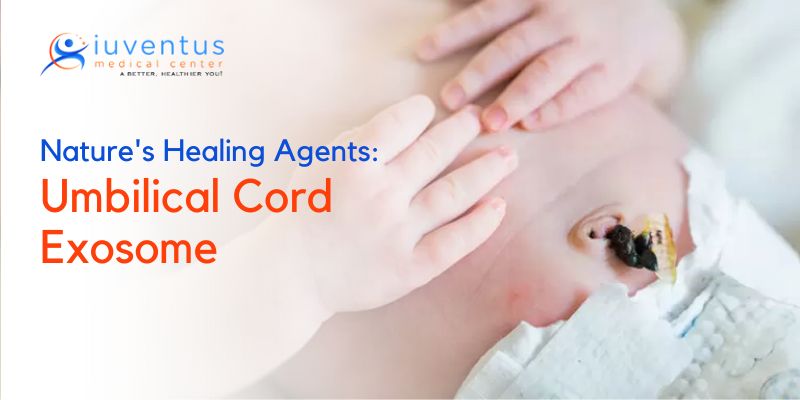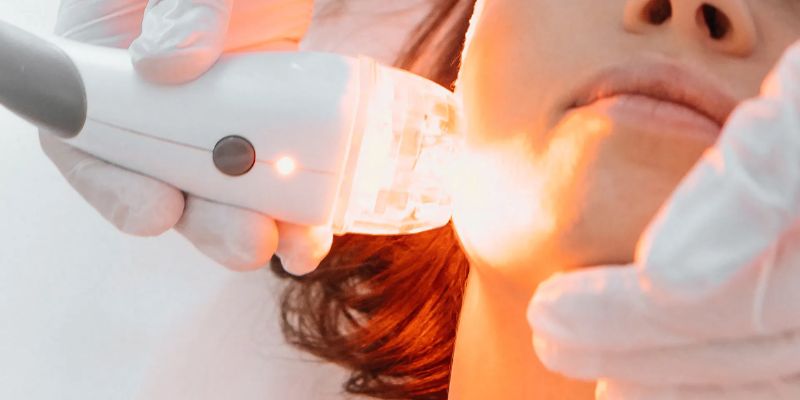Harnessing Nature’s Healing Agents: The Science Behind Umbilical Cord Exosomes

Umbilical cord exosomes, tiny vesicles secreted by cells, have garnered significant attention in regenerative medicine for their remarkable healing properties. These tiny biological packages carry a payload of proteins, lipids, nucleic acids, and growth factors, acting as messengers between cells and facilitating cell-to-cell communication. While the concept of exosomes isn’t entirely new, the specific therapeutic potential of those derived from umbilical cord sources is increasingly becoming a focus of research and clinical application.
Understanding Exosomes: Nature’s Cellular Messengers
Exosomes are extracellular vesicles secreted by most cell types, including stem cells. They play crucial roles in various physiological processes, such as immune response modulation, tissue repair, and cell regeneration. These vesicles are like molecular packages that shuttle biologically active molecules between cells, influencing their behavior and function. What makes umbilical cord exosomes particularly intriguing is their rich cargo of growth factors, cytokines, and other signaling molecules vital for tissue repair and regeneration.
Research suggests that umbilical cord-derived exosomes possess unique characteristics that make them especially effective in therapeutic applications. Compared to exosomes from other sources, such as adult stem cells, those derived from umbilical cord blood or tissue tend to have a higher concentration of growth factors and anti-inflammatory molecules. This potent combination makes them valuable tools for promoting tissue regeneration and modulating immune responses, offering promising prospects for treating various diseases and injuries.
The Power of Cellular Communication
Exosomes are messengers that cells use to communicate with each other. They are released by various cell types, including stem cells, and serve as carriers of biological information. Umbilical cord-derived exosomes are rich in growth factors, cytokines, and microRNAs, which play crucial roles in cell signaling and tissue repair. Exosomes can travel to distant sites and interact with target cells, triggering specific responses when released into the body. This ability to deliver precise signals makes exosomes valuable tools in regenerative medicine.
Regenerative Potential

One of the most exciting aspects of umbilical cord exosomes is their regenerative potential. Studies have demonstrated that these tiny vesicles can stimulate the proliferation and differentiation of various cell types involved in tissue repair. For example, exosomes derived from umbilical cord mesenchymal stem cells have been shown to enhance the regeneration of damaged tissues such as the heart, liver, and nervous system. By promoting the growth of new blood vessels and inhibiting inflammation, exosomes facilitate the repair process, leading to improved tissue function and recovery.
Modulating the Immune Response
In addition to their regenerative properties, umbilical cord exosomes can modulate the immune response, making them valuable in treating immune-related disorders. These exosomes contain immunomodulatory factors that can regulate the activity of immune cells, such as T cells and macrophages. By promoting an anti-inflammatory environment or enhancing immune surveillance, exosomes can help the body combat autoimmune diseases or reject transplanted organs. Furthermore, exosomes derived from umbilical cord blood have shown promise in alleviating the symptoms of rheumatoid arthritis and multiple sclerosis.
Targeted Therapy Delivery
Another advantage of umbilical cord exosomes is their potential as targeted therapy delivery vehicles. Because exosomes can cross biological barriers and precisely interact with target cells, they offer a unique advantage over traditional drug delivery methods. Researchers are exploring ways to engineer exosomes to carry therapeutic payloads, such as drugs or genetic material, to specific tissues or organs. This targeted approach could minimize off-target effects and improve the efficacy of treatments for various diseases, including cancer and neurodegenerative disorders.
Safety and Scalability
Umbilical cord exosomes offer a safe and scalable alternative to traditional stem cell therapies. Unlike whole stem cells, exosomes are non-living entities, eliminating the risk of uncontrolled cell proliferation or immune rejection. Additionally, umbilical cord-derived exosomes can be collected from a readily available and non-invasive source, making them easier to obtain and scale up for clinical use. This scalability opens up possibilities for widespread therapeutic applications, potentially benefiting millions of patients worldwide.
Unveiling the Mechanisms of Action

Understanding the mechanisms of action of umbilical cord exosomes within the body is essential to fully harnessing their therapeutic potential. These tiny vesicles exert their effects through various pathways, including cell-to-cell communication, modulation of immune responses, and promotion of tissue repair processes.
One crucial aspect of their mechanism is their ability to transfer bioactive molecules, such as microRNAs and proteins, to target cells. Once internalized by recipient cells, exosomes can influence gene expression, cellular signaling pathways, and cellular behavior. This process can result in diverse therapeutic outcomes, including cell proliferation, differentiation, and enhanced tissue regeneration.
Furthermore, umbilical cord exosomes possess immunomodulatory properties, making them particularly valuable in treating inflammation and immune dysfunction conditions. By regulating immune cell activity and cytokine production, exosomes can mitigate excessive inflammation and promote tissue healing in conditions like autoimmune diseases or inflammatory injuries.
Challenges and Future Directions
While the therapeutic potential of umbilical cord exosomes is promising, several challenges remain to be addressed before they can be widely adopted in clinical practice. One challenge is standardizing isolation and purification methods to ensure the consistent quality and efficacy of exosome-based therapies. Further research is needed to elucidate the mechanisms of action and optimize dosing regimens for different medical conditions.
However, despite these challenges, the future of umbilical cord exosomes in regenerative medicine appears bright. Ongoing research and clinical trials continue to unveil new insights into their therapeutic potential and safety profile. With advancements in biotechnology and our growing understanding of exosome biology, we are poised to unlock the full therapeutic potential of these natural healing agents, ushering in a new era of personalized and regenerative medicine.
Conclusion
Umbilical cord exosomes represent a remarkable example of nature’s healing agents, offering a potent and versatile approach to regenerative medicine. From their ability to promote tissue repair and modulate immune responses to their potential applications in treating a wide range of medical conditions, these tiny vesicles hold immense promise for the future of healthcare.
As research advances and clinical trials progress, it’s crucial to continue unraveling the mysteries of umbilical cord exosomes, optimizing their therapeutic potential, and addressing clinical translation challenges. With concerted efforts from scientists, clinicians, regulators, and ethicists, umbilical cord exosomes have the potential to revolutionize healthcare, offering personalized and effective treatments for patients in need.
